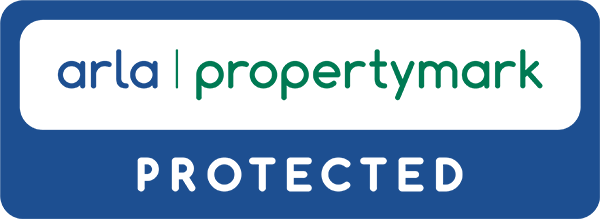How to increase the rent on your rental property
How to formally and legally increase the rent on your rental property and other properties in your investment portfolio.
With mortgage rates hitting a 15-year high and returning to figures last seen following the financial crash in 2008, you may be wondering how you can cover your increasing buy to let mortgage costs without upsetting your existing tenants or even being forced to exit the market entirely.
It’s important to ensure that you’re keeping an eye on the profitability and viability of your property portfolio – the last thing you want is for it to become a burden and start to cost you money rather than make you money. Whether it's to keep up with interest rates, the rising costs of living or to reflect the current market value, regularly reviewing your rental income is vital to having a successful and profitable property portfolio.
In this quick guide, we'll give you an overview of the fundamental considerations and steps you need to follow to successfully increase your portfolio's income.
Reviewing the current rent
If you’ve had tenants in-situ for a while, the chances are that their rent will be below the current market value. Due to unprecedented rent rises, the rental market value of properties has increased up to 12% YoY in the North West alone.
However, it’s important that you accurately review your property's rental amount, using similar properties which are comparable. There’s no point in comparing a small, slightly dated, terraced property with a fully refurbished, larger semi-detached property with off-road parking and a large garden, just because they’re both 2 bedroomed properties. You want to make sure you successfully increase the rent, increase your margins but keep your good tenants in place.
We suggest that you have a reputable and qualified local lettings agent conduct the review for you. They will be aware of the current market in your area, the demand for your specific type of property and perhaps more importantly, the real value of the property. You can quite easily go onto Rightmove or Zoopla and see a similar property being marketed for £300.00 per calendar month more than you are achieving, but that is the advertised price, which is not necessarily the price achieved. It’s important to get the level of rent increase correct, as this gives you the best possible chance of retaining your tenants.
Other factors to consider are the amenities available to the property, such as local transport links, shops and the reputation of the area. We recommend looking no further than ½ mile from your property's exact location to help give you a fair assessment of the market value.
Another consideration when reviewing the rent is the demand for the property. If you have good tenants in-situ, but the property has historically struggled to let, then you may be better keeping the rent slightly lower than risking losing your tenants, and having to pay a re-let fee to a local agent and suffering a void period.
Deciding on the new rent amount
Once you’ve settled on a market value rent, you now need to consider what you wish to increase your current rent to. Too much, and the existing tenants could walk away. Too little, and this is a pointless exercise.
To ensure you come to the correct conclusion, we recommend you set out all of your specific monthly costs related to your property portfolio (if you have multiple properties, do this per property) and add them together. The figure you reach is the minimum you need to collect in rent, just to break even, before you factor in any repairs, maintenance, improvements or unexpected costs such as a re-let fee were the tenants to leave.
As a rule, we advise our landlords to save about 20% of the rent every month, to ensure there is an “war chest” ready for these kinds of ad-hoc costs. Just as you would with VAT payments, it’s important to build up this emergency fund, to ensure you can always meet your legal obligations as a landlord without having to finance them personally.
Once you’ve considered all the above, you should have a figure in mind. Now it’s time to cross-reference that figure with the market value figure from earlier – if your figure is below the market value figure, then you’re in a great position. If it’s close to it, or above the market value figure, it may no longer be financially viable to keep the property. BUT before you do anything, speak to a reputable, qualified and experienced lettings agent for advice, as you’ll want to double and triple check that market value figure.
Increasing the rent
Once you have all your numbers, you need to put the rent increase into place to start covering your additional costs.
It’s always important to have an open and honest relationship with your tenants, so we recommend you approach them first and discuss the proposed new rent with them. Explain the additional costs incurred in mortgage costs, insurance premium, management fees, maintenance cost, ground rent anbd so on. Reiterate that a large proportion of the rent increase is merely to ensure you can keep hold of the property (which is in your tenant's interest as well).
In our experience, when the facts are set out to tenants and they do their own research, they realise that the proposed new rent is still below market value, and the cost for them to move would be higher than accepting the increase.
Of course, it’s important to be fair to your tenants and if they come back with a negotiated figure, simply work your numbers again to see if that works. Remember, we’re trying to increase your rental income here without increasing your expenditure.
Once you’ve negotiated an agreeable rent increase for all, it’s time to officially put it in place…
Tenancy renewals
As we speak, fixed term Assured Shorthold Tenancy Agreements do exist, and are still valid. This is subject to change should the proposals from the Renters Reform Bill become law, where all tenancies will be moved onto a single periodic tenancy.
Now, you may be reviewing your rent because the existing fixed term tenancy is coming to an end. At which point, you can renew the tenancy for a fixed length at the new increased rent. The tenants sign up to the agreement, contractually agreeing to the new higher rent payments.
Alternatively, your tenants may have proposed a fixed term agreement in return for the higher rent, to provide them with some security. In our experience, a minority of tenants can feel uneasy during a periodic tenancy, and a fixed term contract specifying the rent and duration provides them with that additional peace of mind.
When conducting a tenancy renewal, once again we recommend you use a reputable, qualified and experienced lettings agent, as their tenancy agreements will meet the relevant statutes and regulations, as well as being up-to-date and far more comprehensive than the ones available free of charge online. They will also ensure that all other documentation, such as the deposit protection certificate and prescribed information, the latest How to Rent Guide and other Deregulation Act 2015 paperwork is in place, for a valid tenancy to begin.
If however you wish to leave the tenancy as a periodic one, then you may need to do one of the two following steps:
Step 1
If the initial tenancy agreement has a rent increase clause, allowing the landlord to increase the rent annually, then you simply just need to write to your tenants quoting this clause, advising what the new rent level is and provide them with the date the increased rent is due. Some of these clauses may have restrictions, such as increasing the rent no more than 5% annually, so it’s important you stick to the terms set out in the initial agreement.
Step 2
If the initial agreement contains no such clause allowing for a rent increase, you will need to serve what’s known as a Section 13(2) notice (form 4) to implement the increase. Again, there are restrictions in place on the Section 13(2) notice as to how much notice you need to provide, and the frequency in which you can increase the rent. It’s important this notice is served after ALL the Deregulation Act 2015 paperwork is served in addition to other documentation such as the Gas Safety Certificate, Deposit Protection Certificate and Prescribed Information etc. An appointment agent can serve these documents for you, on your behalf should they have access to it.
If you’re unsure of which option is relevant to you, or how you go about implementing either, then we recommend you contact us on 0161 511 5339 or via our contact form to speak to one of our lettings specialists.
You can find out how to serve a Section 13 notice to increase the rent on a rental property in our dedicated blog article here.






